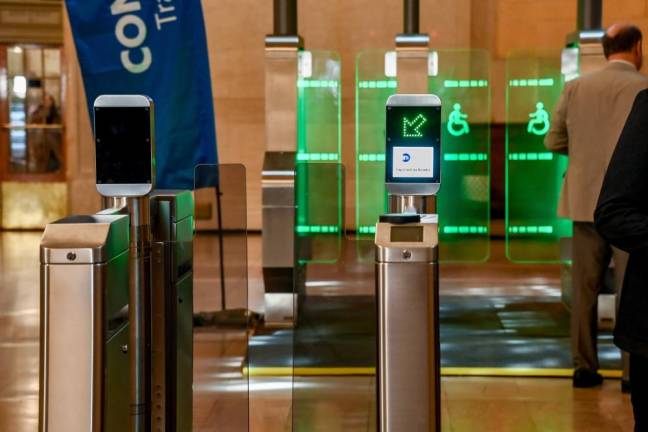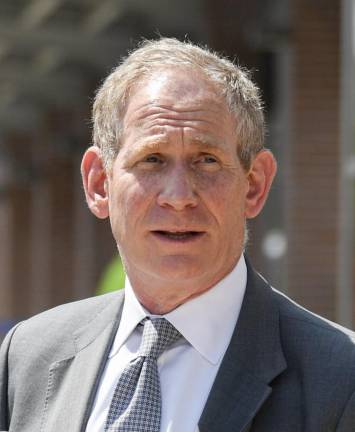The Pandemic really tore at the fabric of New York. Bad behavior of all sorts has proliferated. Restaurateurs struggle to keep diners from abusing their staff. Shopkeepers complain that pilfering is routine.
But almost nothing compares to the epidemic of New Yorkers stealing rides on city transit.
“On the buses and subways in particular, evasion levels have spiked since the pandemic,” a blue ribbon MTA panel reported. “They show no signs of dropping.”
The scale of the “crisis” is shocking, the panel said. New Yorkers of all sorts evaded an estimated $690 million in bus and subway fares in 2022, which means that roughly one dollar in eight was missing from the fare box. This year, fare beaters may cost the MTA a cool $1 billion
Janno Lieber, who chairs the MTA, says there are now so many nonpaying, and thus uncounted, riders that the system’s post-covid recovery is being significantly understated. Riders are back–they just aren’t paying their fair share of the fare.
While some of this fare evasion is caused by the financial stress many New Yorkers have been struggling with, the blue ribbon panel noted that fare evaders come from “all walks of life” and, at times, seem to be avoiding the fare just because others are.
Which is why they described this as not just a financial or a criminal challenge, but a civic crisis.
“Those who do pay are justifiably upset by those who evade,” the panel said.
“As one rider put it at an MTA Board meeting, for those who do pay, it feels like ‘an insult’ to watch those who do not.”
This is dividing New Yorkers, the panel said, “threatening the public transit system, and tearing at the social fabric of New York. It is time to take action to forcefully combat evasion before its impacts become irreversible.”
Like most challenges in New York the scale of the problem is breathtaking. “About 400,000 riders enter the subway each day without paying–a problem so big that enforcement alone cannot solve it,” the panel reported.
In fact, the panel said the most important thing the MTA could do to reduce evasion would be to replace aging turnstiles with more modern and accessible sliding portals on the subways. This would make it easier for everyone to enter and pay properly and also allow the system to eliminate those ubiquitous emergency gates.
While in the New York vernacular fare evasion is often called “turnstile jumping,” most improper entries are by people following one another through those emergency gates.
“We have watched at subway stations while people from all walks of life streamed in through the emergency exit gates, as if that has become an acceptable thing for New Yorkers to do,” the panels 16 members wrote.
The panel, appointed last year by the MTA, did say that a new system of enforcement was needed, but it walked gingerly around the history of police using stops for fare evasion to identify those likely to commit more serious crimes–a category of the so-called “broken windows” strategy of policing.
As Lieber himself has said, most transit criminals are fare evaders but most fare evaders are not otherwise criminals.
“Evasion happens in neighborhoods all across the city and enforcement efforts should be consistently applied,” the panel said. “The risk of a summons or arrest should be just as great for evasion on the Upper East Side as it is in East New York.”
This idea that enforcement must be even handed, and proportionate to the motives for the offense, emerged at the very same time in a separate discussion at City Hall of the challenge of retail theft, which has exploded in New York and nationally since the pandemic
“There are people who steal out of necessity,” said the deputy mayor for public safety, Philip Banks, in releasing a report on stemming shoplifting. These people need support and resources, he said. “And there are people who steal because they’re in organized crime–and they should feel the wrath of New York City.”
The transit transit panel said that criminal prosecution for fare evasion should be reserved for “determined evaders,” repeat offenders and those who enable evasion by others.
“Social media chatter makes clear that many see fare evasion as outright cool or somehow socially justified. It is neither. For the determined evader, the focus must be on deterrence and enforcement.”
For those for whom the fair is a financial burden, the panel recommended the doubling of discount programs for low-income New Yorkers, including raising the income level that qualifies.
The panel urged an aggressive effort to educate riders on how important it is to pay their fare. First offenses for evasion should be handled with a warning and even repeat offenses for most riders should be dealt with through civil summons and fines, the panel recommended.
Enforcement should be shifted for the most part to non-police transit workers, something that will become far easier to do as the system adopts its OMNY system of fare collection with an easy to review record of payment.
The panel repeatedly stressed the damage fare evasion was doing to the city’s social fabric, sprinkling through its report the angry comments of paying customers:
“I feel like a chump for paying the fare when other riders don’t.”
“So, if I am paying my fare, why won’t everyone also do the same? Not fair.”
The panel concluded: “Fare evasion is more than upsetting–as evasion grows, it can actually breed more evasion.”

